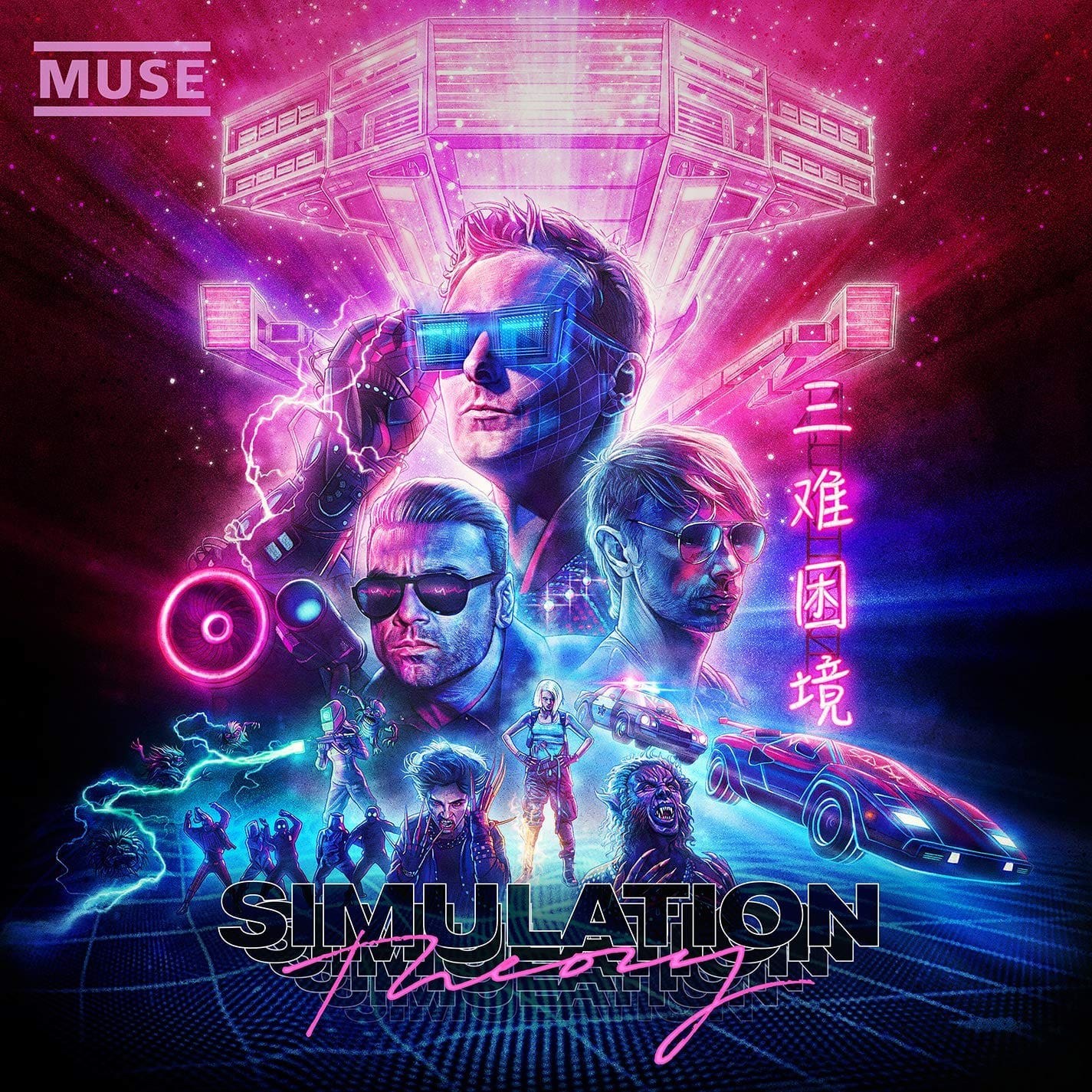Last week, only days after Muse released their 8th studio album Simulation Theory, lead singer and lyricist Matt Bellamy posted an Instagram story to his account that showed footage of towering flames less than 100 feet from his back door. On the other side of that door was the studio where said record was recorded and mixed. In a surreal twist of fate, Muse – a band with a flair for the dramatics – was caught in a literal crossfire between a natural disaster outside and the safe space of creation.
This sounds like it might be a metaphor, but more than anything I think it highlights that even wealthy rock stars are questioning their reality. What if this is all a simulation? Are any of us really free? What does it mean to be human? While these heady questions might belong more in a freshmen philosophy class than on a rock album, I’m not sure Muse is intent on answering them. On Simulation Theory, Muse toys with these themes, but above all, they mostly want us to dance.
The album’s opening track “Algorithm” pulls listeners in immediately with heavy, 80’s-inspired synth, electronic drums, and piano. With only a few lyrical lines, the track would tonally and aesthetically be right at home in a Blade Runner movie or on a John Carpenter soundtrack. These references end up being much more important to the record’s whole than you’d think.
So much of the record is referential in the way that most alternative music has been for the last several years. At this point in 2018, there’s nothing remotely new about 80’s synths, Tron-like beats courtesy of Daft Punk, or mixing drum machines with pop vocals. But they pop up here. The official cover art for the album was created by the man behind the Stranger Things art design, which has been parodied to death, while the deluxe album cover art was designed by the same artist responsible for the Star Wars: The Last Jedi and Avengers: Infinity War movie posters. Simulation Theory’s music videos for the singles “Dig Down,” “Thought Contagion,” “Something Human,” and “Pressure” all indirectly or directly reference 80’s cyberpunk icon Max Headroom, Michael Jackson’s Thriller, Back to the Future, and Teen Wolf, respectively.
The record isn’t afraid to tread familiar Muse ground, as well. One of Simulation Theory’s producers is Rich Costey, who famously co-produced 2003’s Absolution and 2006’s Black Holes and Revelations – and it certainly sounds like it. The record’s second track “The Dark Side” features vocals eerily reminiscent of their classic hit “Stockholm Syndrome” as Bellamy sings, “Break me out, break me out / Let me flee / Break me out, break me out / Set me free.” With a melody that sounds undeniably like The Cars, the song still manages to feel like Muse.
Perhaps the best track on the record, “Get Up and Fight” is a unique combination of uplifting and empowering lyrics a la Drones’ “Revolt” and The Resistance’s “Uprising,” alongside futuristic and otherworldly sounds. Tove Lo provides soft harmonizing vocals in light of an explosive chorus, triumphant drums, and more piano. “Pressure” is another track that would fit nicely on Black Holes and Revelations with its classic Muse-esque heart-pounding bridge and chorus, highlighting drummer Dom Howard’s inimitable rhythmic skill.
When the record isn’t sounding so familiar to previous works, it takes sharp left turns by frequently jamming two dissonant genres together. On “Propaganda” – a song that never fails to make me laugh out loud, though that’s not necessarily a bad thing – acoustic guitar is strangely paired with overly auto-tuned vocals. A soft folk sensibility guides the majority of “Something Human” despite the presence of hard rock instruments. In “Algorithm,” heavy synth and classical piano are played in conjunction, as if they were always meant to be. In these cases, the dissonance mostly works; it sounds fresh. The only exception comes in the album’s worst track “Thought Contagion,” which includes oh oh ohs done to death by Imagine Dragons and cheap beats underneath rap-lite singing too eerily close to Twenty-One Pilots for comfort.
Ultimately, on any other record and in the hands of any other band at any other time, the recycling of references familiar sounds would be a major disservice to the album – but not in the hands of Muse. It never feels like the band is being lazy or relying solely on what’s been done before; if anything, each track feels like an overt attempt to take what we’ve already heard, flip it around, reconsider its significance, and hear it in a new light. You begin to wonder if Muse is trying to make a larger point with the record and its themes – is it possible with such familiar elements, we are supposed to hear it as a simulation? The record is a lot like what we already know, yet still different enough to stir us, move us, and ignite us with an optimistic spark.
We all might be slaves to algorithms, and surrounded by danger or literal fire, but we are still capable of being moved by music. And Muse has given us something moving, thought provoking, and – at the bare minimum – songs that make me want to dance. Simulation Theory is much more just a simulation in itself, it’s something so obviously human.
Rating: 8.0 / 10
Highlights: “Get Up and Fight,” “Pressure,” “Algorithm,” “Dig Down”


